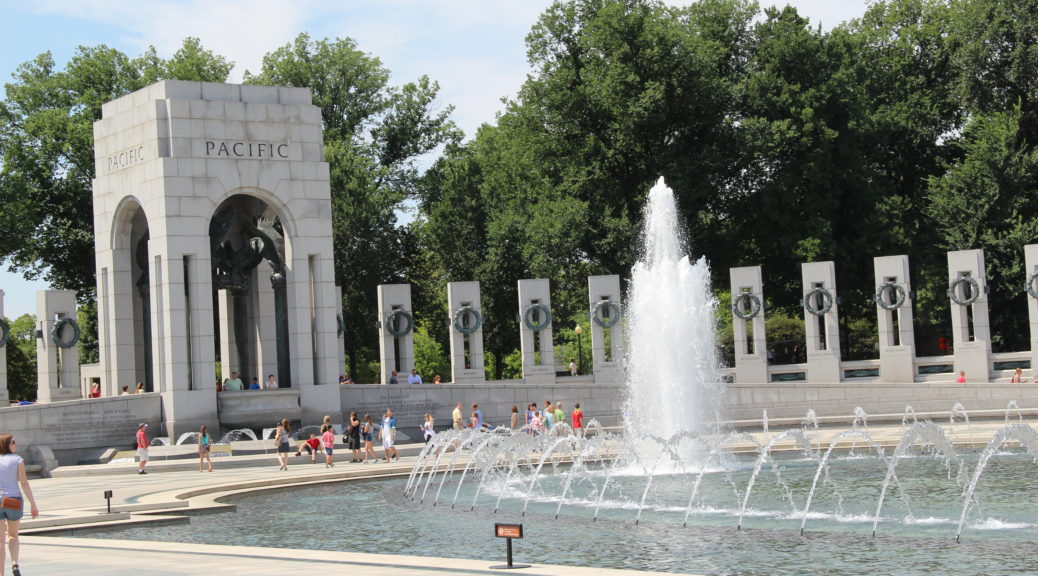
Monuments in Washington DC
We were able to visit several monuments and memorials during our time in Washington DC. The first memorial below is the Vietnam Veterans Memorial. It lies on two acres and actually consists of three different monuments. The “Wall” is certainly the most famous and can be seen in the first two pictures below. There are 140 panels made of black granite. Additional panels were purchased in case a panel is damaged and needs to be replaced (two were damaged during the 2011 earthquake). The names of those who died while serving in Viet Nam or are missing in action are engraved on the stone (some are omitted at the family’s request). There are directories so you can locate a name if you wish.
The third picture below is named “The Three Servicemen” and is also part of the Vietnam Veterans Memorial. The soldiers can be identified as being Caucasian, African-American and Hispanic. They seem to be looking at the memorial wall.
The last two pictures in this section are of the third statue making up the Vietnam Veterans Memorial. This one is the “Women’s Memorial” and is dedicated to the women who served in Viet Nam. Many of these were nurses and the women in this memorial are portrayed caring for a wounded soldier.

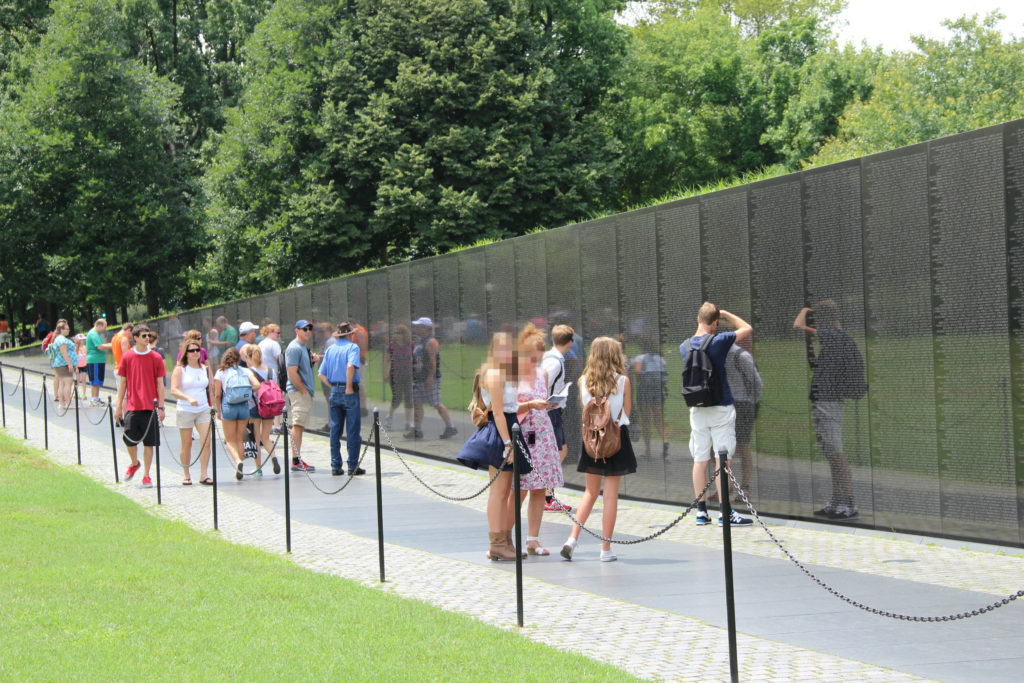
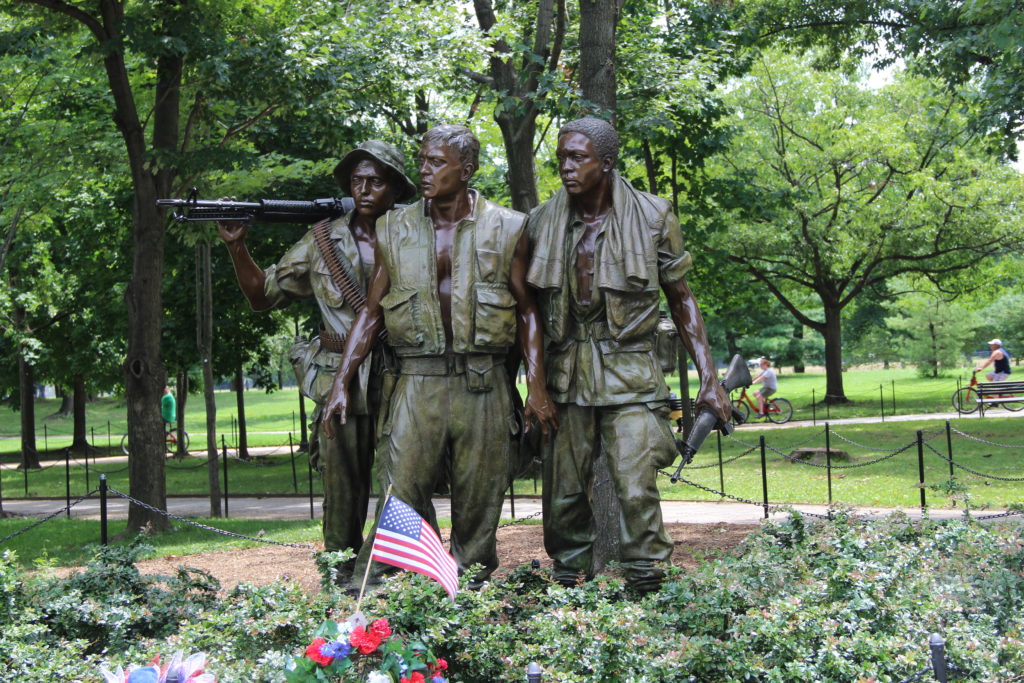
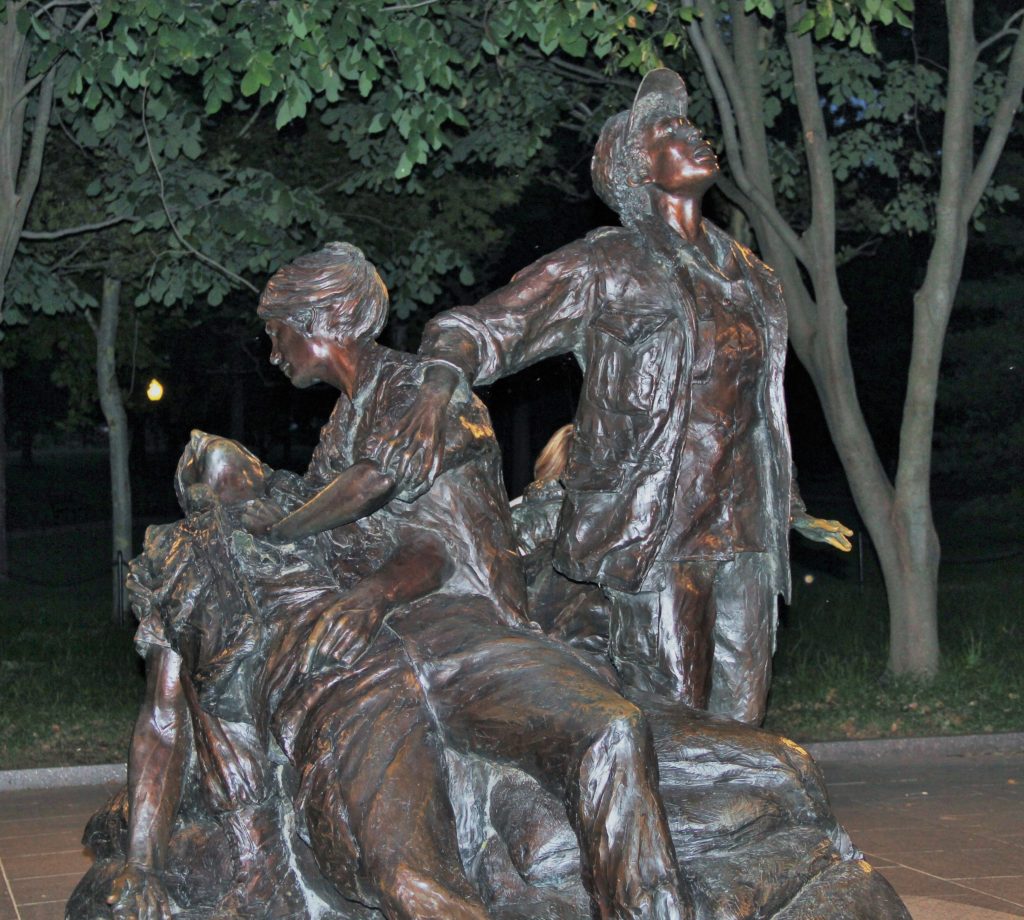

These are pictures of the Washington Monument. It was built as a tribute to President George Washington, though actually to honor his military career rather than his presidency. It was built in two phases, the first between 1848 to 1856 and the second between 1876 to 1884. A lack of funds and politics contributed to the delay the work being temporarily stopped. You can see the color difference in the stone. The monument is about 550 feet tall and weighs over 80,000 tons. The thickness of the monument walls gradually narrows from 15 feet at its base to 18 inches near the top. The monument is closed until August 2019 for elevator repairs and the installation of a security system. When we visited, we only viewed the monument from the outside. The last two pictures were taken as we were standing near the Lincoln Memorial and include both the Washington Monument and the Lincoln Memorial Reflecting Pool.
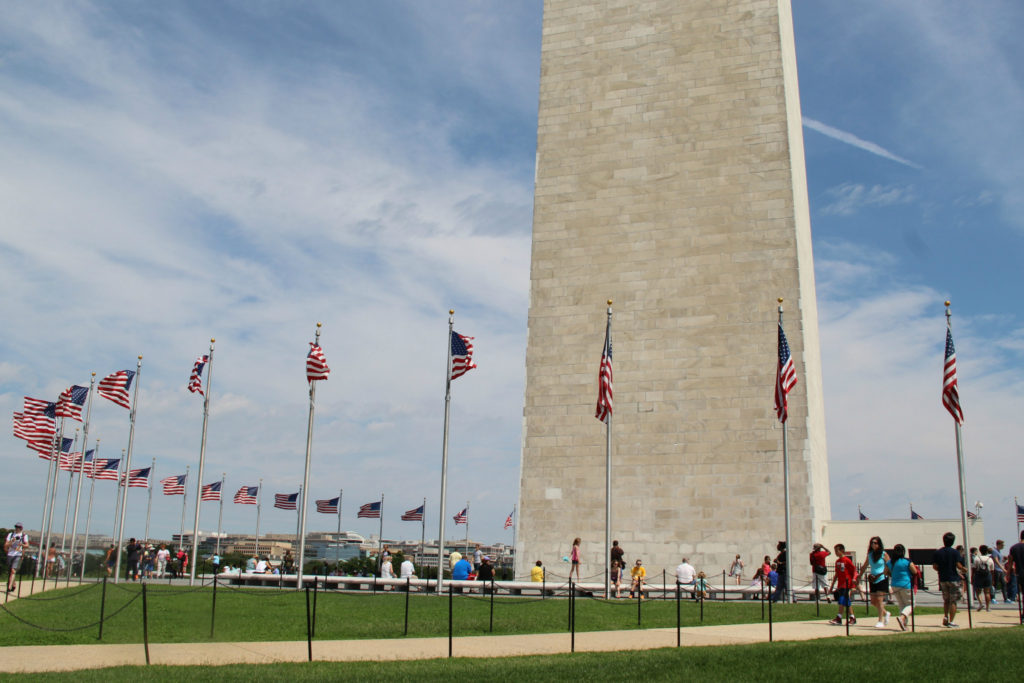


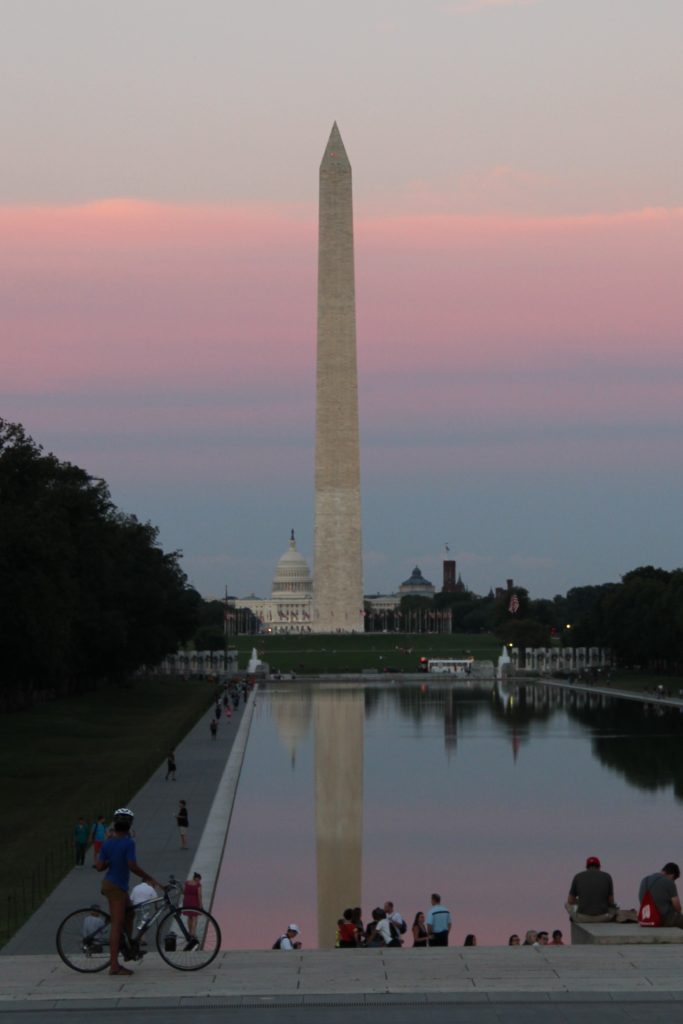
The National World War II Memorial sits on the east side of the reflecting pool. It honors all of the people who served in the war. It is a beautiful fountain with two arches, one commemorating victory in the Atlantic and the other in the Pacific. The fountain is surrounded by columns representing the states, District of Columbia and US territories. There are also panels with scenes of the war carved into them. My husband’s father loaded bombs on planes and my father was a corpsman. I’ve pictured panels that were representative of their service. The last picture is of the Freedom Wall. It has 4,008 stars, each representing 100 people who died in the war or are missing.

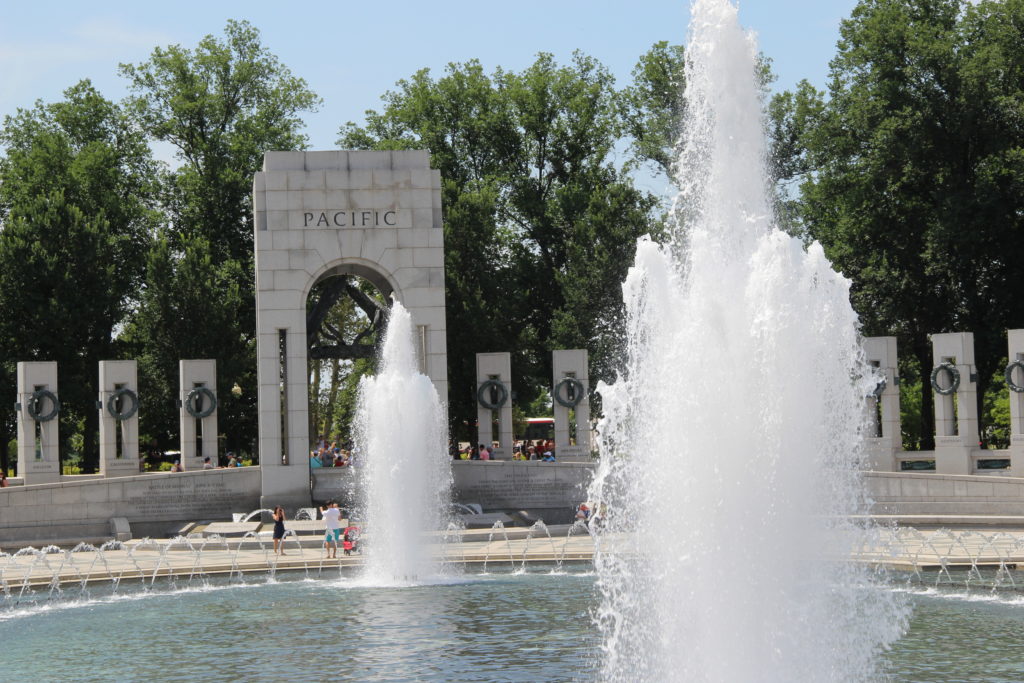
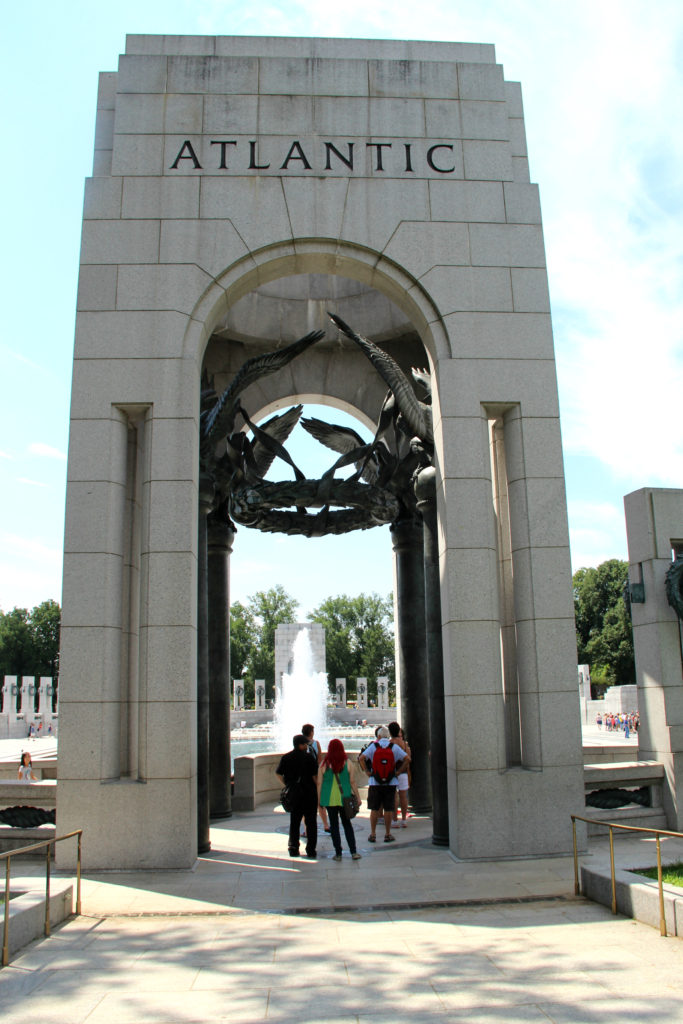
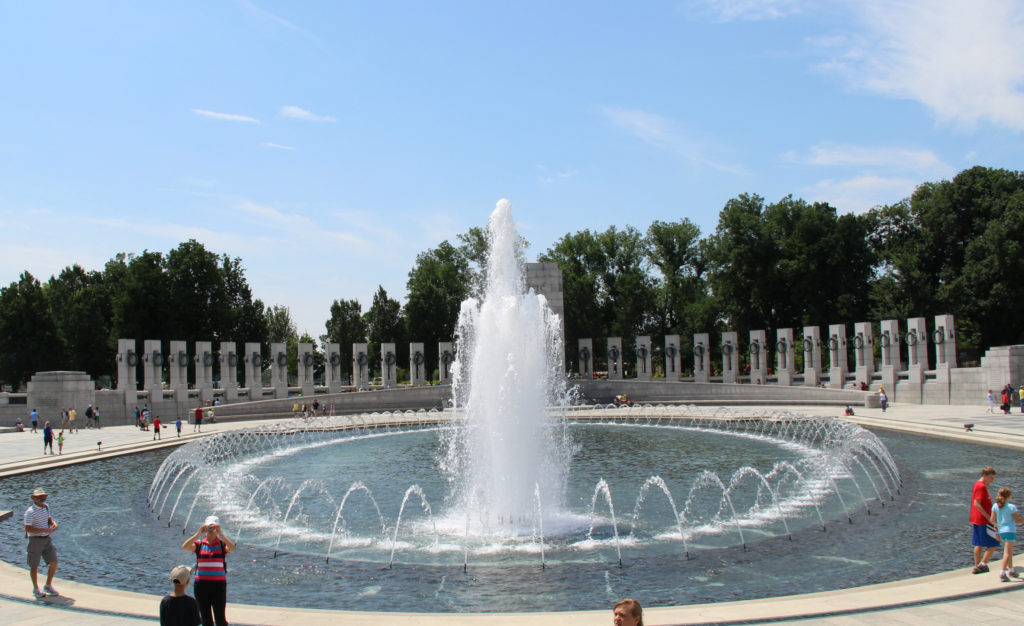
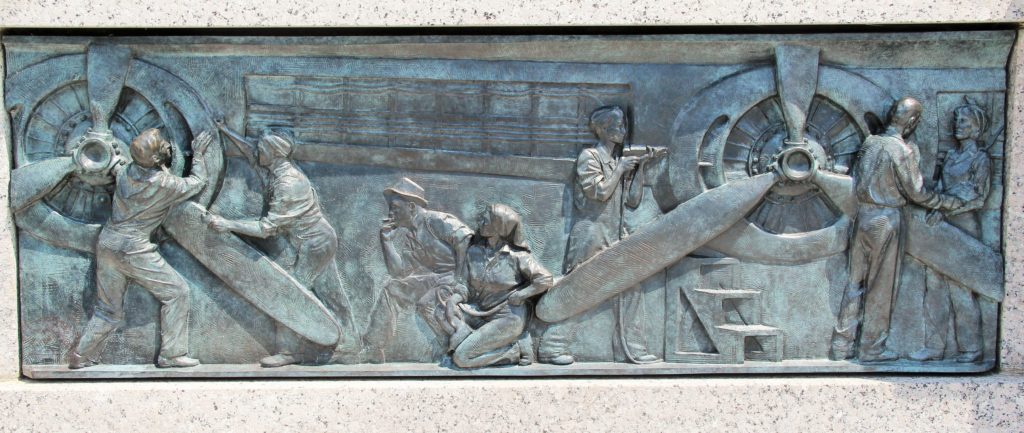
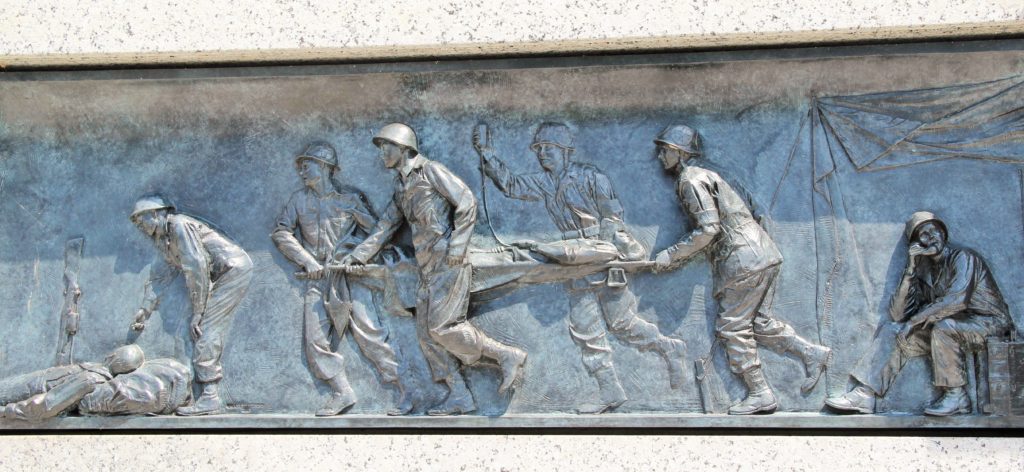
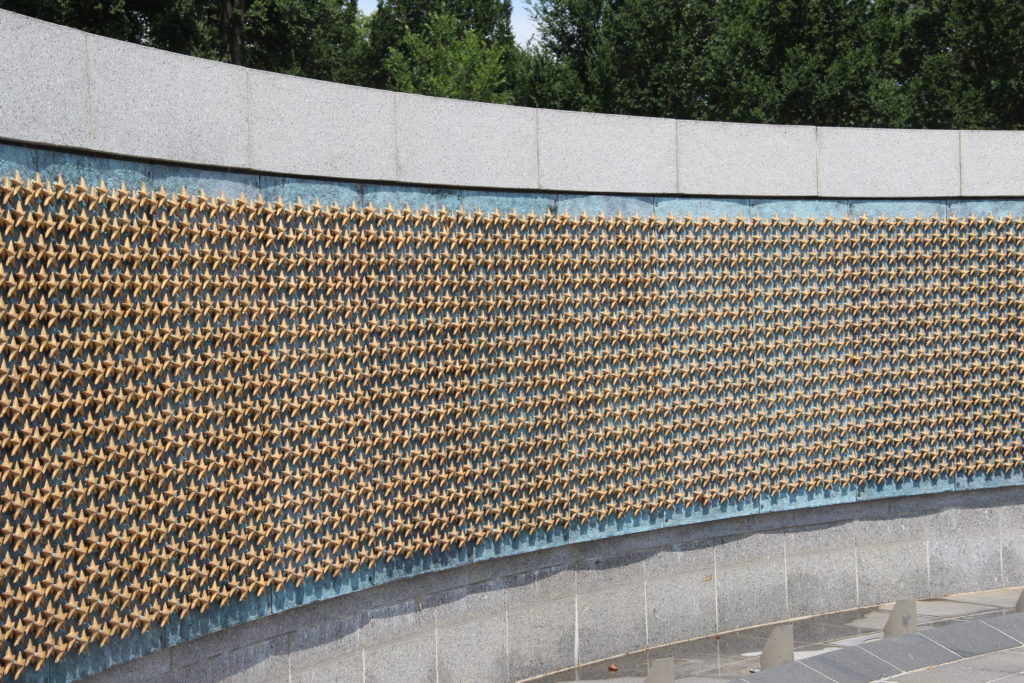
We walked along the reflecting pool and next visited the Korean War Memorial. It honors the almost six million Americans who served during the war. There are 14 statues representing members of the Army, Marines, Navy and Air Force. They are portrayed as though walking through rice patties. There is also a mural wall which contains etchings created from actual photographs taken during the war (last picture in this section). Twenty-two countries provided support during the Korean War. The names of these countries are sculpted into the “United Nations’ Curb” at the Memorial. There is a kiosk at the site where visitors can find information about those killed or declared missing in action.
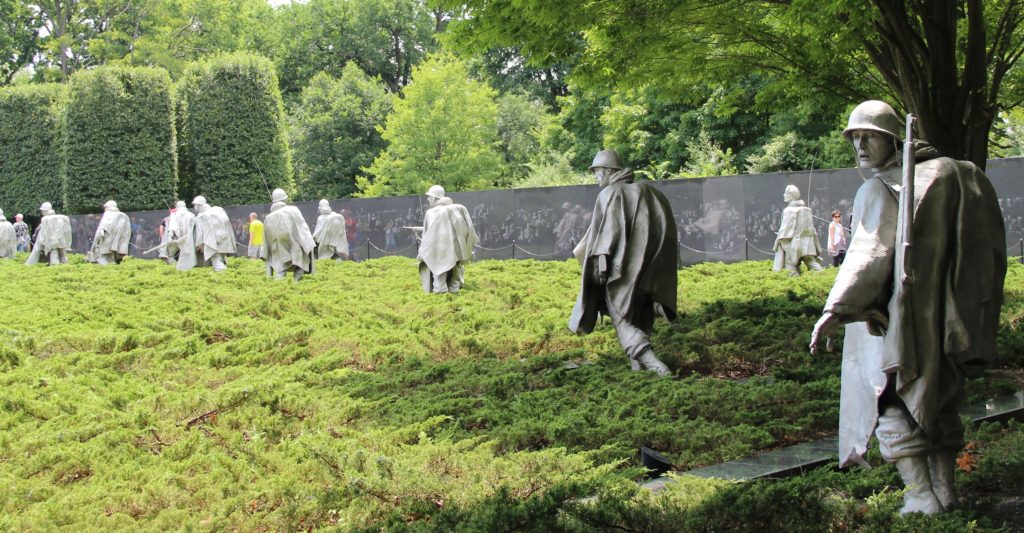

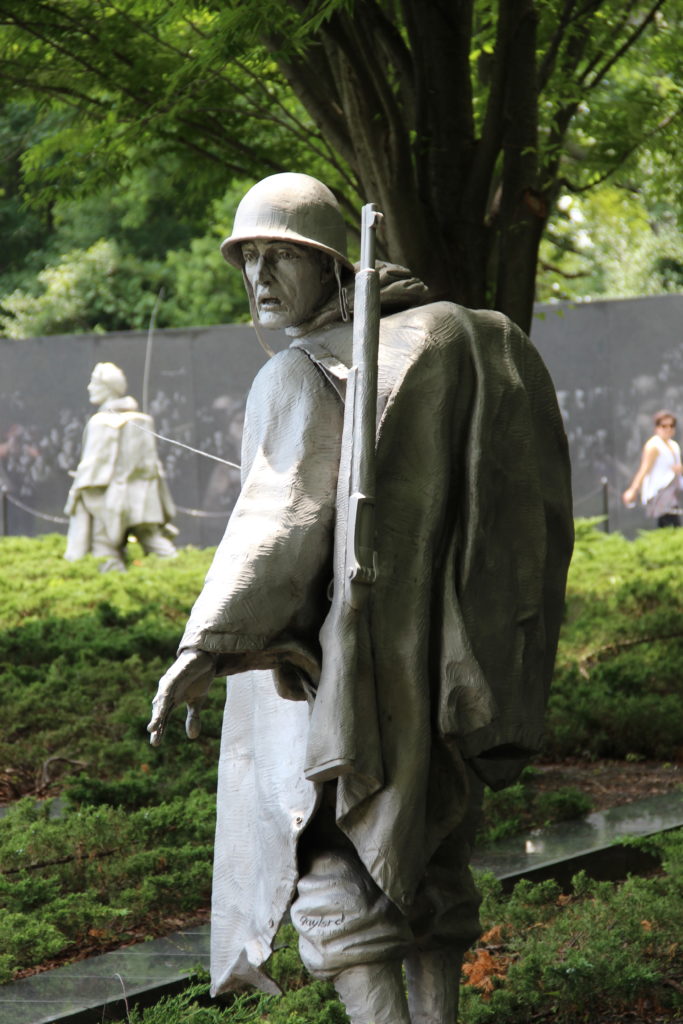

The Lincoln Memorial is situated at the western edge of the reflecting pool. It was built to honor President Abraham Lincoln and opened in 1922. The memorial itself has 36 marble columns representing the 36 states at the time of Lincoln’s presidency. When you walk up the steps, you will see a statue of Lincoln looking out over the Mall. The statue is 19 feet tall and weighs 175 tons. Two of Lincoln’s speeches are etched into the wall on either side of the statue. One is the Gettysburg Address and the other is his second inaugural address. We saw the Lincoln Memorial during the day and also during our evening tour.


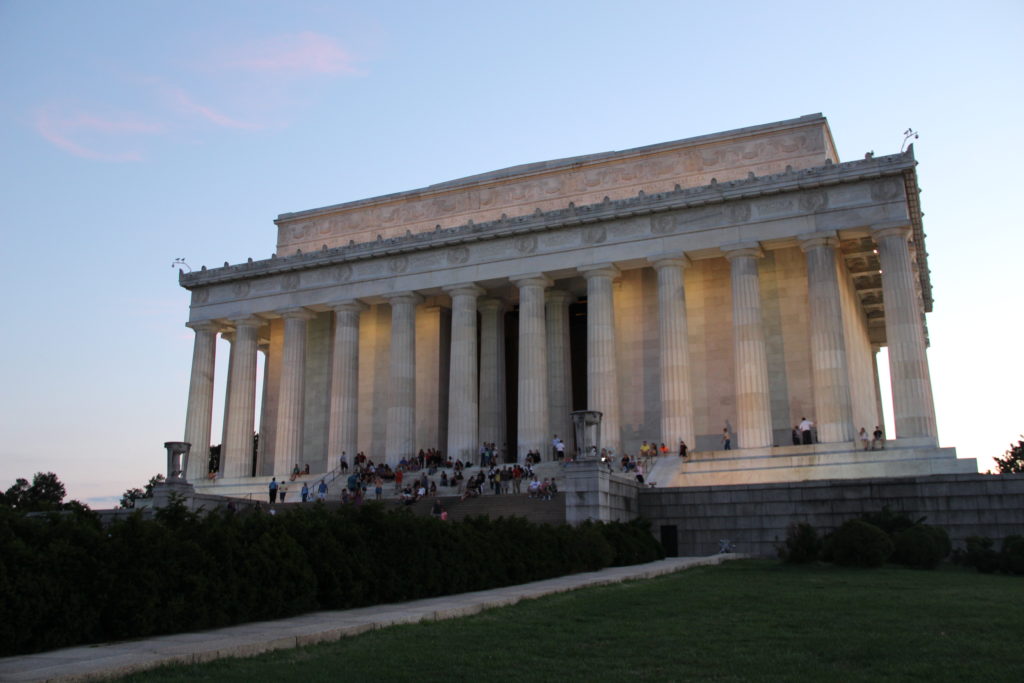
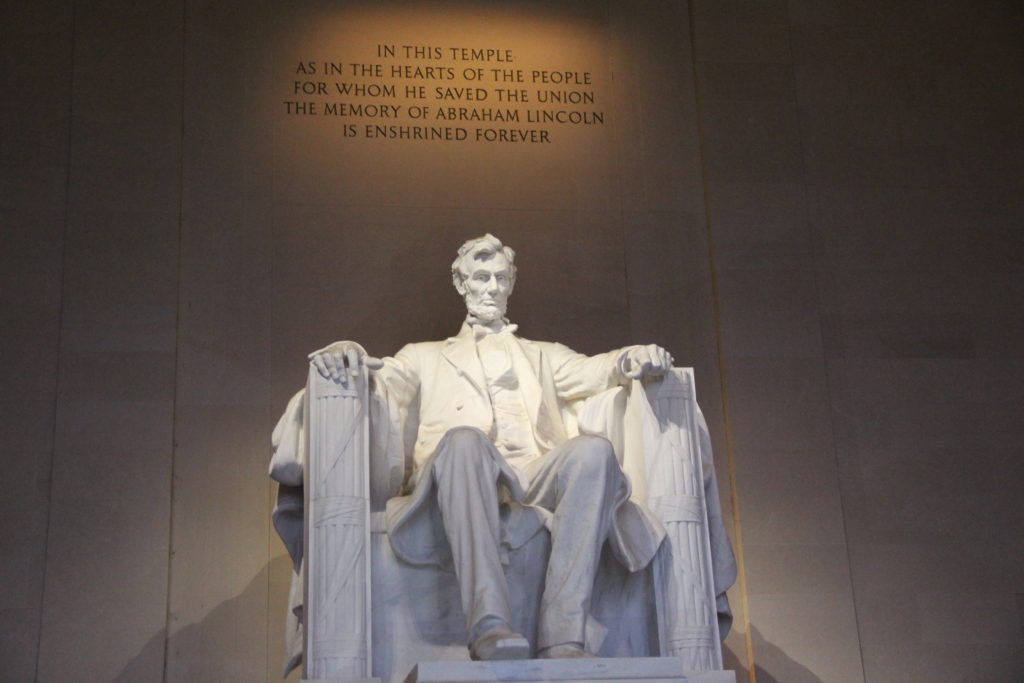
During our evening monument tour, we cross the Potomac River and went to Arlington, Virginia. Near the entrance to Arlington National Cemetery, we saw the United States Marine Corps War Memorial, more commonly known as the Iwo Jima Memorial. The statue is based on a famous photograph taken when a flag was raised on Mount Suribachi during the battle of Iwo Jima, marking the end of World War II in the Pacific. It was dedicated in 1954, and an American flag has flown there 24 hours a day since. The Memorial is dedicated to “the Marine dead of all wars and their comrades of other services who fell fighting beside them.”
The statue is made of bronze and features the six servicemen who raised the flag – five were Marines and one was a Navy corpsman. The sculptor consulted with three surviving soldiers from the battle when making the faces of the soldiers. All of the battles since 1775 in which Marines fought are etched into the base of the statue.
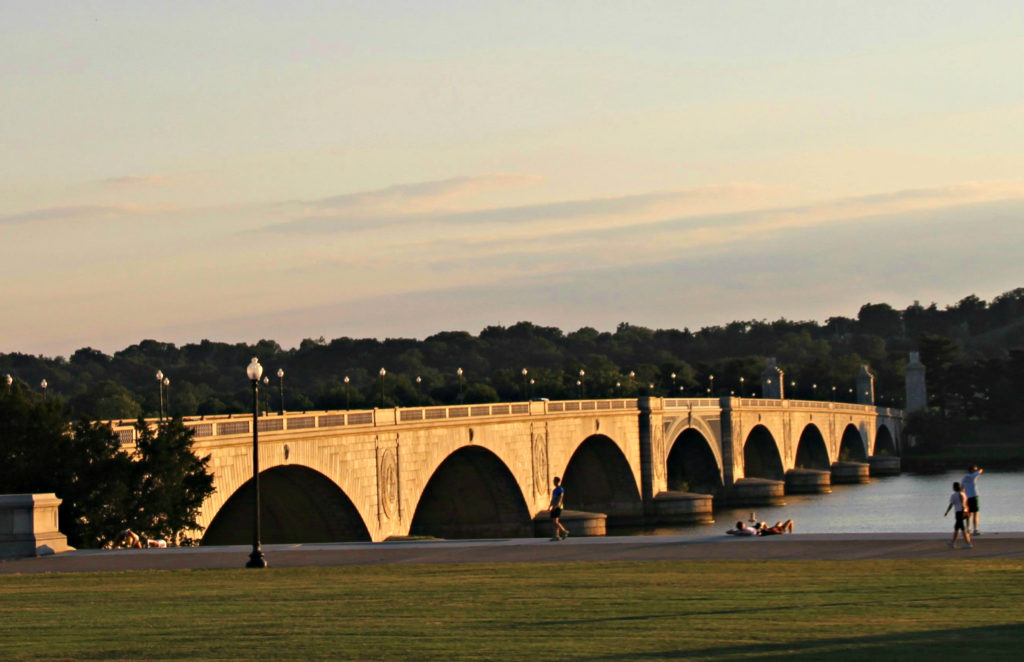

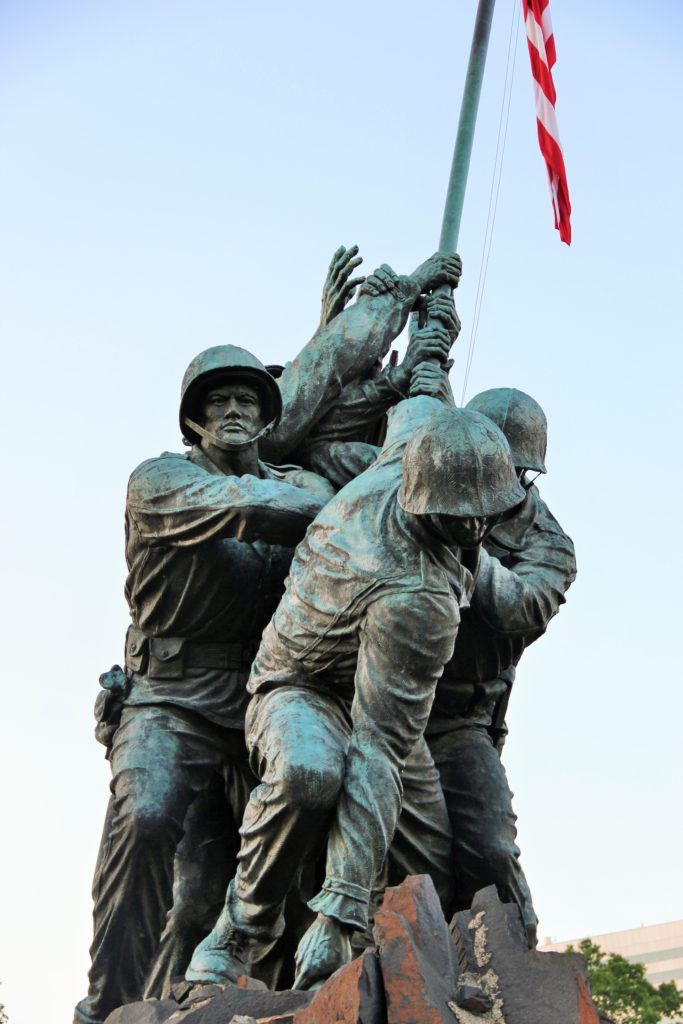
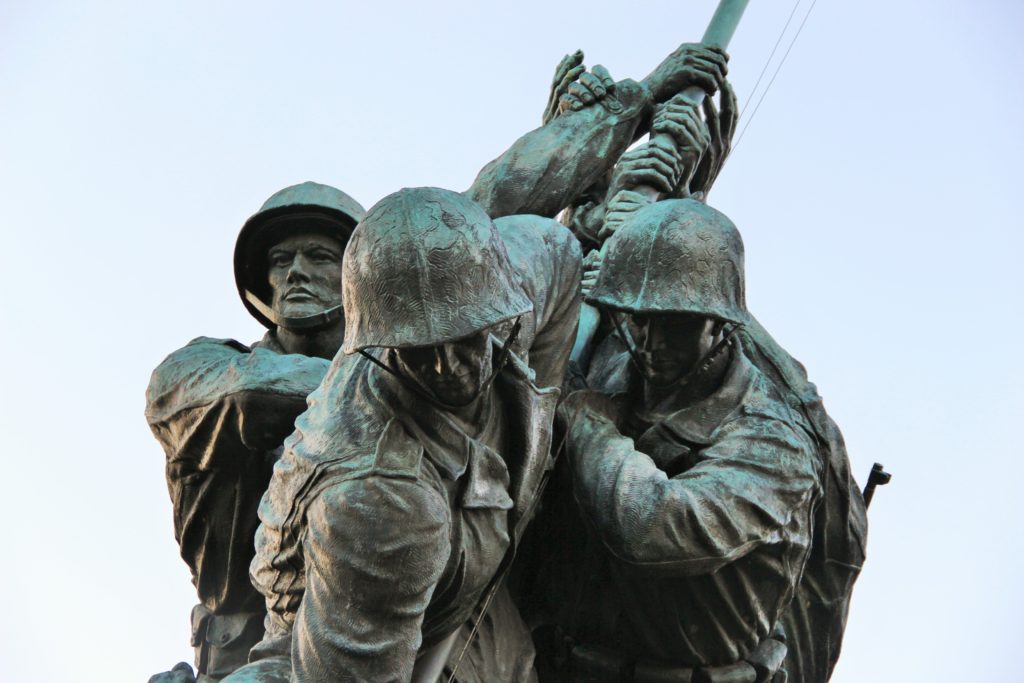
Next are pictures of the Franklin D. Roosevelt Memorial. It is the largest memorial in Washington DC, covering about 7 1/2 acres. Walkways take visitors to four open air rooms, each room representing one of FDR’s four terms in office. Near the entrance of the memorial is a statue of Roosevelt in a wheelchair, which he needed after being afflicted with polio. This was not an original part of the memorial. Disability advocates believed such a statue would encourage others with disabilities. The statue was added in 2001, four years after the memorial had been dedicated.
The first room (not pictured here) portrays FDR’s first inauguration. The second room reminds us of the Great Depression. The Bread Line (second picture) and The Fireside Chat (third picture) represent the hard times people endured during the Depression and the hope FDR tried to convey as he addressed Americans over the radio.
Water falls over rocks in the third room, representing the turbulence of World War II. The statue of Roosevelt, sitting with his dog, was intended to suggest his calm leadership. The fourth room depicts Roosevelt’s funeral procession (not pictured here) and a statue of Eleanor Roosevelt, in tribute to her contributions as First Lady and a delegate to the United Nations. She is the only First Lady who is part of a presidential memorial.
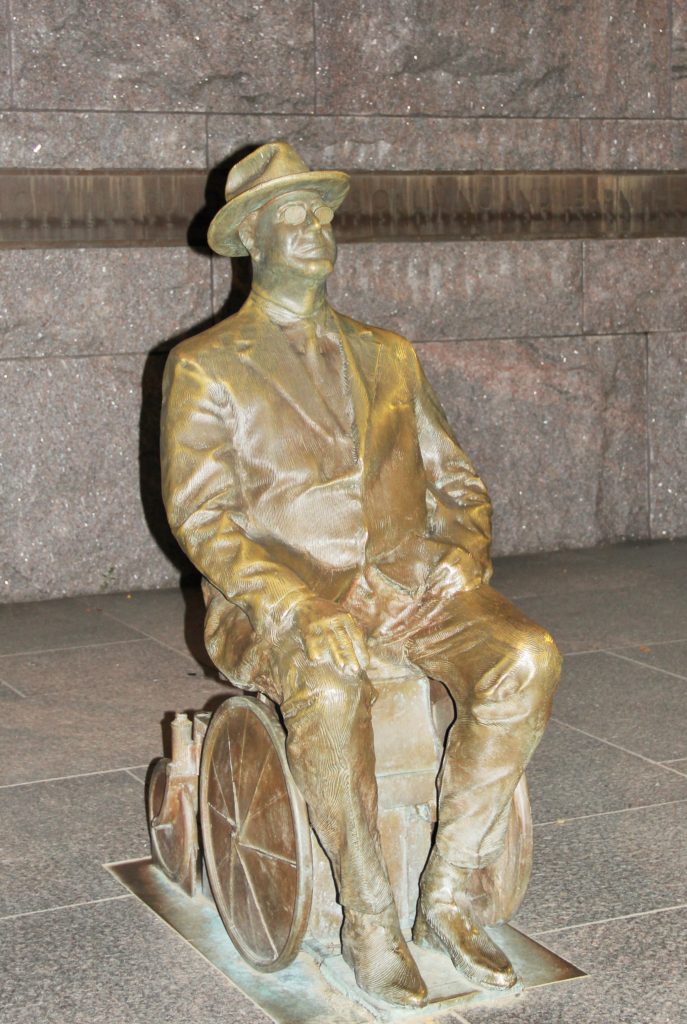
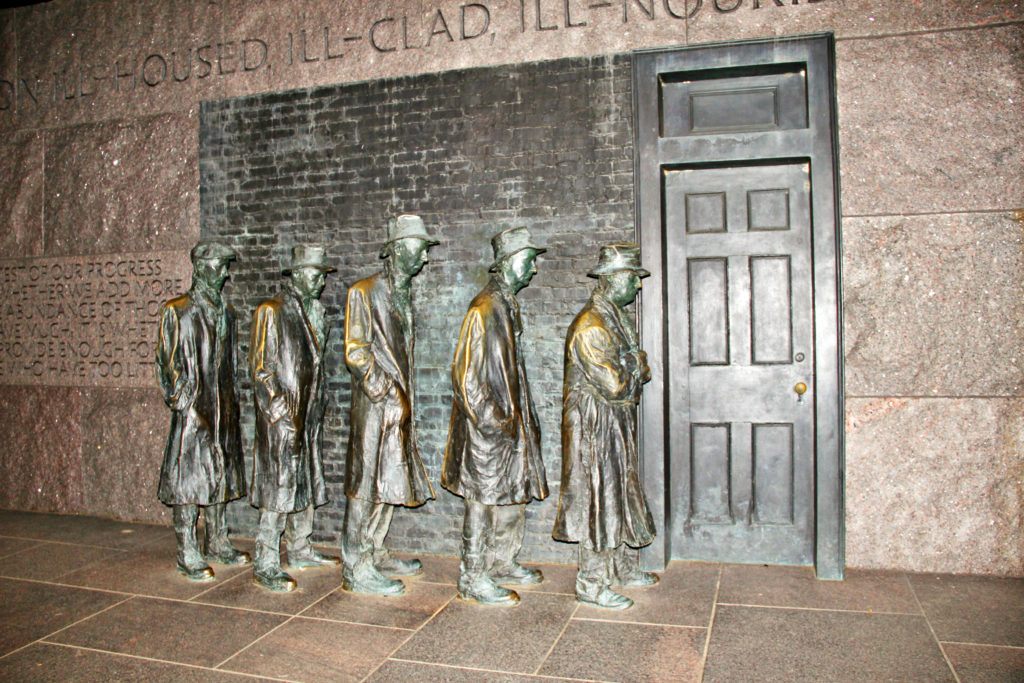
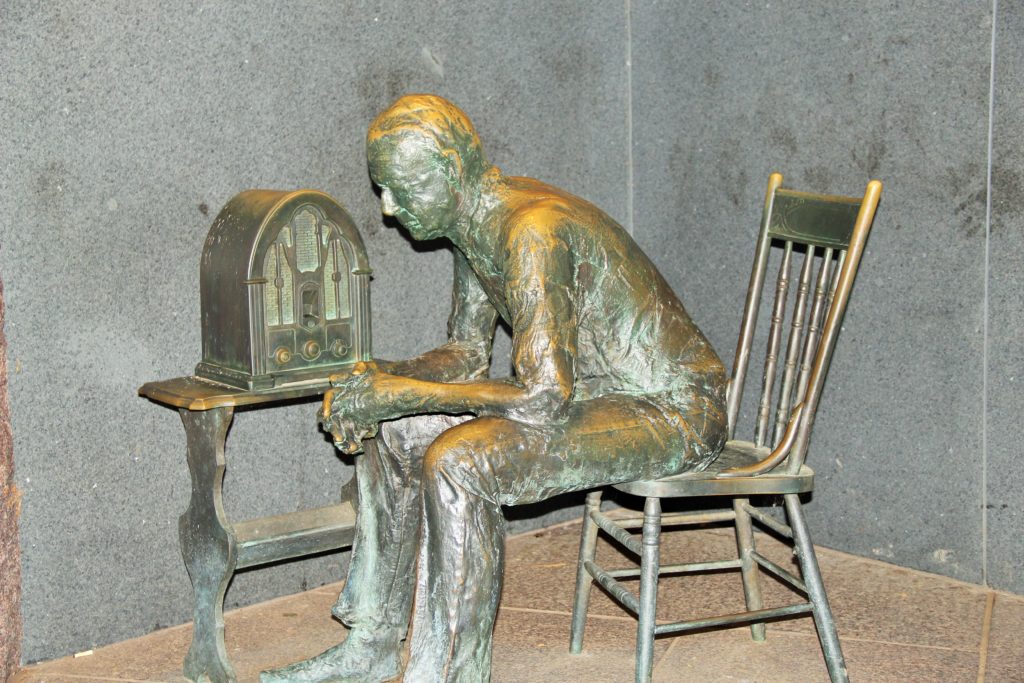
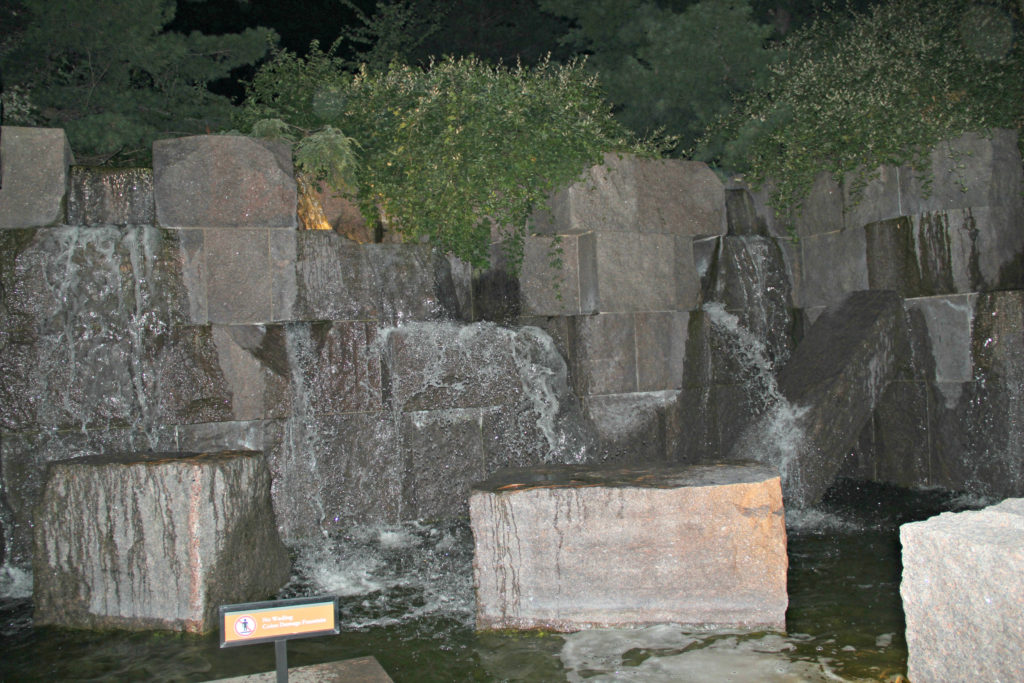
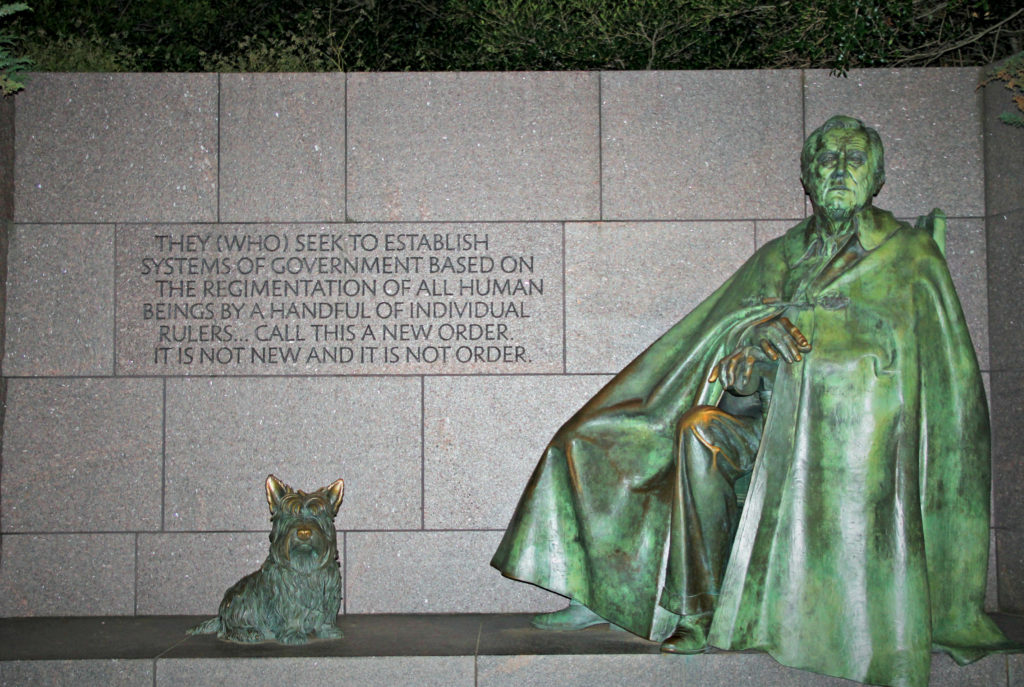

The next pictures are of the Martin Luther King, Jr. Memorial which is located near the National Mall. The Memorial’s address, 1964 Independence Avenue SW, is significant in its reference to the Civil Rights Act of 1964. There is a 450-foot long “inscription wall,” upon which are selected quotes from Dr. King’s speeches and sermons. The wall is pictured immediately below.
The next two pictures are of the statue of Dr. King; the statue is named “Stone of Hope.” This title is taken from a phrase in his I Have a Dream speech: “Out of the mountain of despair, a stone of hope.” The statue is 30 feet tall. It is one of only four memorials for a person who did not serve as a United States president that is located on or near the National Mall.
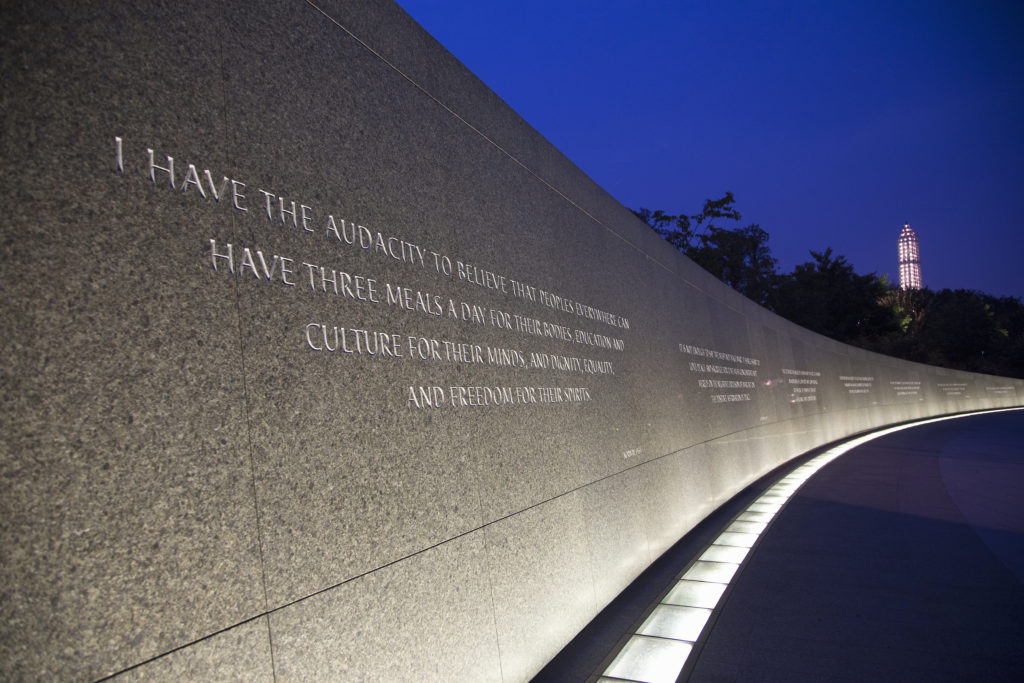


The first picture below is of the Jefferson Memorial. We saw it from a distance so did not go inside. Although it is a little difficult to see from the angle of my picture, it is designed similarly to the Pantheon in Rome. It is made of marble and granite. There is a portico on the other side of the building. The memorial was officially dedicated in 1943, on the 200th anniversary of Jefferson’s birth. A 19-foot, bronze statue of Thomas Jefferson was added in 1947. Prior to this, due to shortages during World War II, a plaster cast painted in a bronze color was inside the memorial. There are also quotations from Jefferson’s speeches and writings etched into the walls of the memorial. Thomas Jefferson was a major author of the Declaration of Independence, the first Secretary of State, the second Vice President, and the third President.
The next statue is a very different one than the others included in this blog entry. It is of Albert Einstein and is located on the grounds of the National Academy of Sciences. Einstein holds a paper with mathematical equations related to the photoelectric effect, the theory of general relativity, and the equivalence of energy and matter. I asked my husband (retired physics teacher) to explain these to me – and after his explanation, decided readers could just google info if they are really interested! The base upon which the statue sits is actually a star chart, representing where planets, moons, stars and other bodies were on the date the statue was dedicated.
A monument to honor those serving during World War I is planned to open in 2021. It will be erected in Pershing Park in Washington DC. The winning design is entitled, “The Weight of Sacrifice.”
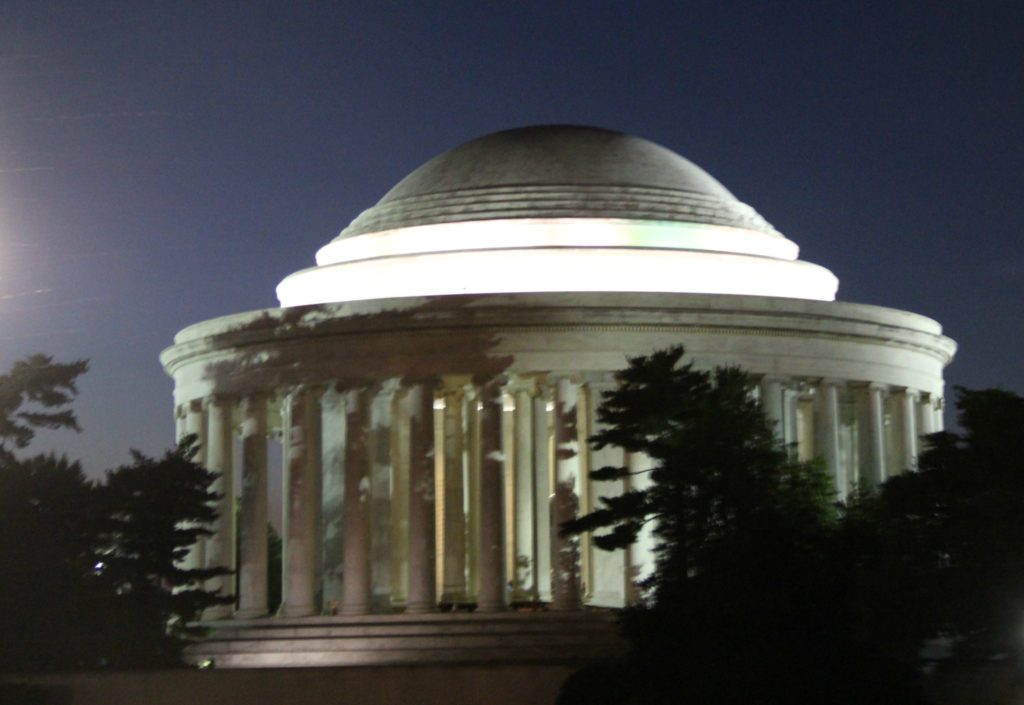


We utilized a “hop on – hop off” bus and also took a night tour of the monuments which helped us to see several monuments/memorials while utilizing our time efficiently. We could spend as much time as we wanted at sites when traveling via the “hop on – hop off” bus. There was a schedule for these buses helping us to plan how long we wanted to stay at the site. For the night tour, we traveled on the same bus for the entire tour. We were able to get off the bus at each of the memorials we visited and had a set amount of time (which was adequate) to explore the site. This worked well for us.